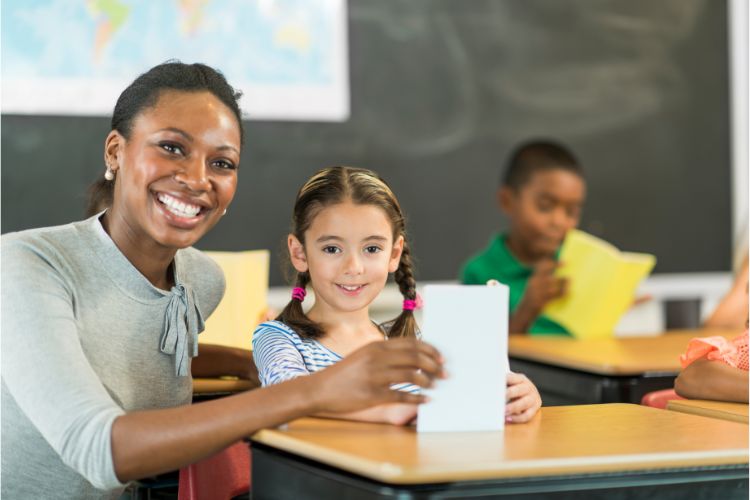Have you ever wished you could make learning truly exciting for your young students? What if you had the tools to transform your classroom into a space where kids are eager to learn and grow? Effective Teaching Goals for Elementary can make this a reality! By understanding and implementing these key goals, you’ll empower learners, build strong foundations, and foster a lifelong love of learning. Ready to discover how these goals can revolutionize your teaching?
Goal 1: Fostering a Love of Learning

Elementary school is where many students form their initial perceptions of school. If those experiences are positive and engaging, you’ll spark a love of learning that lasts a lifetime.
How Can You Achieve This?
- Make It Relevant: Connect lessons to real-life experiences and students’ interests.
- Embrace Curiosity: Encourage questions, exploration, and hands-on activities.
- Celebrate Effort: Praise the process of learning, not just the outcome.
Goal 2: Building Strong Foundations in Core Subjects

Literacy and numeracy skills are the building blocks for future academic success.
How Can You Achieve This?
- Focus on the Fundamentals: Ensure mastery of basic reading, writing, and math concepts.
- Make It Multisensory: Incorporate visual aids, songs, and movement into your lessons.
- Differentiate Your Approach: Provide options and support to meet the needs of all learners.
Helpful Hint:
Collaborate with parents! Share simple at-home activities to reinforce classroom learning and provide resources to support their child’s progress.
Goal 3: Developing Social-Emotional Skills

Elementary school isn’t just about academics; it’s about learning to interact with the world.
How Can You Achieve This?
- Create a Safe and Inclusive Space: Establish clear rules, celebrate diversity, and foster a sense of belonging in your classroom community.
- Teach Empathy and Kindness: Use read-alouds, role-playing, and discussions to explore feelings and practice compassion.
- Problem-Solving Strategies: Guide students in conflict resolution, self-regulation, and responsible decision-making.
Goal 4: Nurturing Creativity and Critical Thinking
Don’t let standardized tests stifle those imaginative young minds! Elementary school is the perfect time to cultivate creativity and problem-solving abilities.
How Can You Achieve This?
- Open-Ended Questions: Ask questions that encourage multiple answers and different perspectives.
- Project-Based Learning: Offer opportunities for students to design, create, and present their work on topics that interest them.
- Embrace Mistakes: Create a safe space for students to take risks, try new things, and learn from their mistakes.
Putting These Goals into Action
Great goals are essential, but how do you actually translate them into engaging lessons and a thriving classroom environment? Here are some practical tips to make these teaching goals a reality:
Fostering a Love of Learning: Make It Fun and Engaging!
- Theme-Based Learning: Immerse students in a particular topic through engaging activities, costumes, and even classroom decorations. Transform your classroom into a rain forest, a bustling city, or a spaceship exploring the solar system!
- Games and Activities: Learning doesn’t have to be confined to textbooks! Incorporate educational games, puzzles, and interactive simulations to reinforce concepts in a fun way.
- Choice Boards: Empower students with some ownership over their learning. Offer choice boards with various activities related to a topic, allowing them to pick tasks that pique their interest.
Helpful Hint:
Choose themes that tie into your curriculum or allow students to vote on their favorites. You can even break down larger themes into smaller, week-long explorations.
Examples of Theme-Based Learning Activities
| Theme | Reading/Writing | Math | Science | Social Studies | Art/Music |
|---|---|---|---|---|---|
| Under the Sea | Write poems about ocean creatures Read informational texts about marine life |
Measure the length of whales Calculate water displacement |
Experiment with buoyancy Study ocean currents |
Map migration routes Learn about conservation efforts |
Create underwater landscapes Compose songs about sea creatures |
| Ancient Egypt | Research hieroglyphics Write a diary from an Egyptian’s perspective |
Calculate pyramid dimensions Use fractions for food distribution |
Mummification process Learn about ancient medicine |
Explore social structures Compare with modern governments |
Create tomb artwork Learn about Egyptian music |
| Outer Space | Create alien character descriptions Write a science fiction story |
Design a space habitat Calculate distances between planets |
Study stars and planets Build model rockets |
Research space exploration history Debate ethics of colonization |
Draw constellations Compose a “space symphony” |
| Rainforest | Research rainforest animals Write a persuasive letter about conservation |
Measure plant growth Calculate rainfall averages |
Study plant adaptations Conduct photosynthesis experiments |
Learn about indigenous tribes Explore deforestation issues |
Create leaf collages Learn rainforest songs and dances |
| Medieval Times | Write a ballad about knights Read legends and folktales |
Build a model castle Use geometry for siege tactics |
Investigate medieval medicine Research the feudal system |
Compare medieval society to modern life Design a coat of arms |
Learn about period music Stage a simple sword fight (safely!) |
Building Strong Foundations in Core Subjects
- Daily Routines: Dedicate time each day for foundational skill practice. This could be a short burst of flashcards, a quick writing prompt, or timed math drills.
- Technology Integration: There are a wealth of engaging educational apps, games, and websites that can supplement your lessons and make practicing core skills interactive and fun.
- Real-World Applications: Show students how these foundational skills are used in everyday life. For example, have them measure ingredients for a recipe in math class or write a persuasive letter to advocate for a cause they care about.
Stats:
A study by the Joan Ganz Cooney Center at Sesame Workshop found that students who used educational technology for reading practice made significant gains in reading fluency and comprehension compared to those who did not.
Building Well-Rounded Learners
Equipping students with foundational academic skills is crucial, but fostering their social-emotional well-being and intellectual curiosity is equally important. Let’s explore how to achieve these goals within your elementary classroom.
Developing Social-Emotional Skills
- Morning Meetings: Start your day with a brief check-in circle. Students can share their feelings, celebrate successes, and practice active listening.
- Cooperative Learning: Design activities that require teamwork and collaboration. This helps students develop communication, problem-solving, and social skills.
- Social-Emotional Learning Curriculum: Many resources are available to integrate social-emotional learning (SEL) directly into your curriculum. These resources can address topics like self-awareness, managing emotions, and responsible decision-making.
Helpful Hint:
Consider incorporating role-playing activities to help students practice conflict resolution and social skills in a safe and controlled environment.
Nurturing Creativity and Critical Thinking
- Open-Ended Activities: Move beyond worksheets and rote memorization. Encourage students to explore concepts through open-ended projects, creative writing assignments, and thought-provoking discussions.
- Inquiry-Based Learning: Pose questions that ignite curiosity and encourage students to research, analyze information, and draw their own conclusions.
- Maker Spaces: Dedicate a classroom area or designated time for students to tinker, build, and create using various materials. This fosters problem-solving, imagination, and collaboration.
Empowering Your Students
The most effective teaching strategies are those that cater to your unique students and learning styles. Observe your classroom, adapt your approach when needed, and most importantly, celebrate your students’ individuality and growth throughout their elementary school journey.
FAQs
Wrapping Up
The goals of effective elementary teaching go beyond test scores. By fostering a love of learning, building strong foundations, developing social-emotional skills, and nurturing creativity, you’ll empower students to become curious, capable, and compassionate individuals. Remember, the most impactful teaching is student-centered and joyful!
